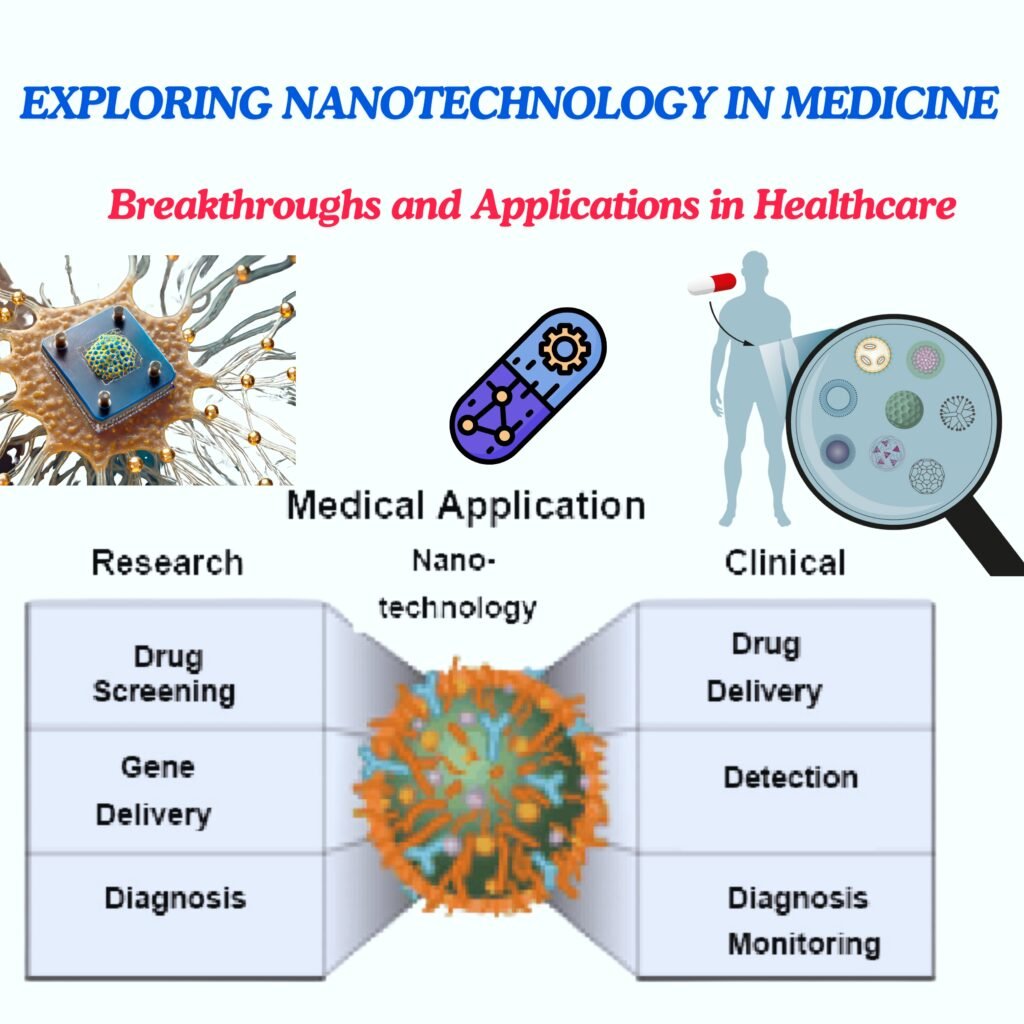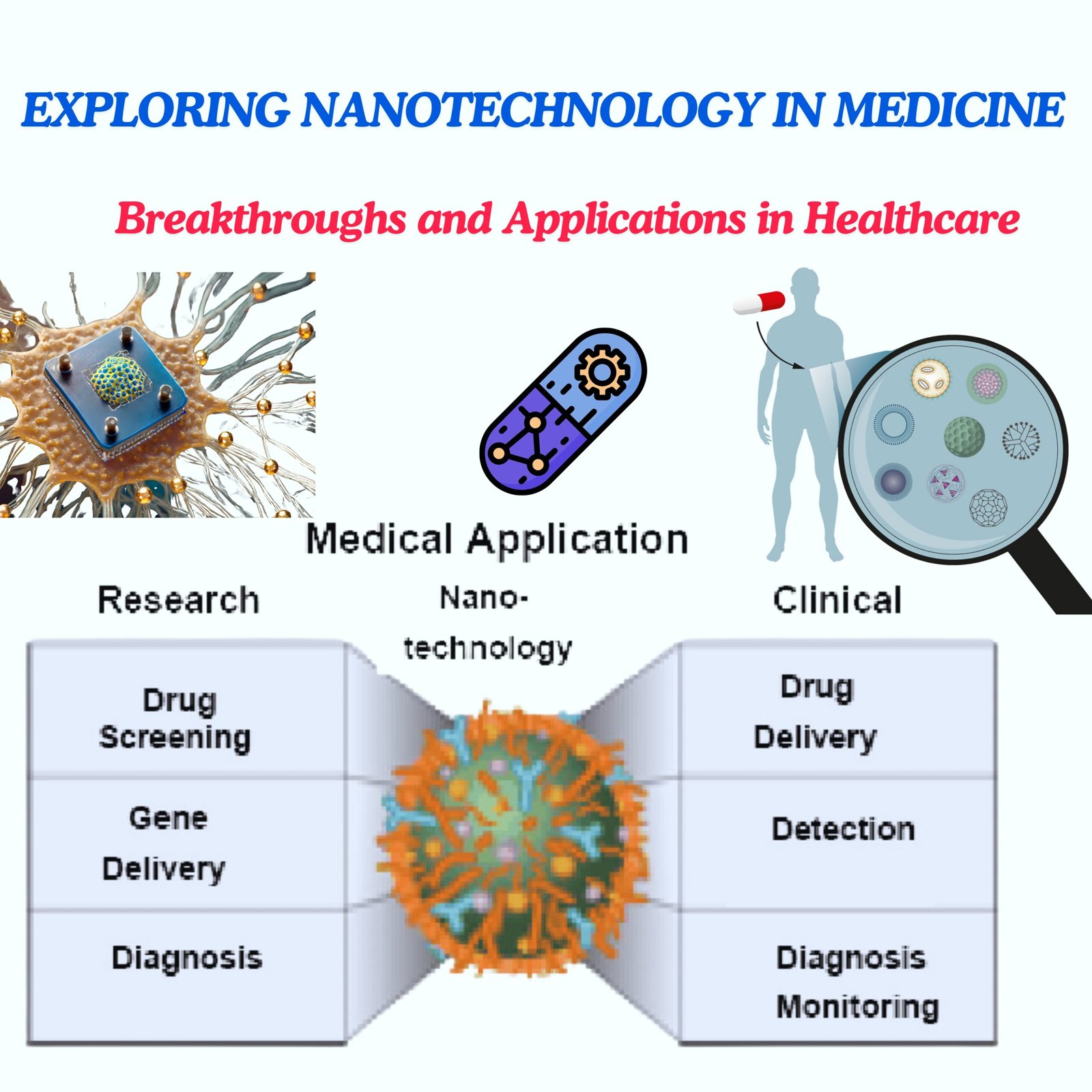Nanotechnology is emphasizing to select a size range of about nanometer range. Nanotechnology was defined by the National Nanotechnology Initiative as the manipulation of matter with at least one dimension sized from 1 to 100 nanometers (nm).
The objective of nanotechnology is developmental towards various fields including medicine, communications, robotics and genomics.
LITERAL MEANING:
The term nanotechnology is derived from the Greek word nano, meaning dwarf, and applies the principles of engineering and manufacturing at a molecular level. The excitement generated by nanotechnology can be traced to the promise of revolutionary changes in medicine, robotics and communications.
BASIC OBJECTIVES:
- The construction of nanoscale-sized structures for diagnostics, biosensors and local drug delivery.
- The ongoing revolution in genomics, proteomics and nanoengineered microbes.
- The creation of molecular machines or medical nanorobots capable of identifying and eliminating host pathogens, replacing/repairing cells or cellular components in vivo.
HOW NANOMATERIAL IS MANUFACTURED?
There are two main approaches for the material to be manufactured at nanoscale level:
- Self-assembly
- Position-assembly
1) SELF ASSEMBLY
DNA strands interact with other DNA strands in predictable ways and are rather stiff polymers that have a tendency to self-assemble. Additionally, complementary DNA strands have been demonstrated to “zip” themselves up into a variety of progressively complicated designs, such as squares, three-dimensional stick-figure cubes, and truncated octahedrons made up of hundreds to thousands of nucleotides. DNA is also easily manipulated by enzymes. Additionally, using DNA’s self-assembly properties, it has been shown that
(a) When a positively charged cobalt compound is added to the solution surrounding the molecules, two rigid double-stranded DNA arms will rotate between fixed positions.
(b) Three artificial DNA single strands will self-assemble to form a V-shaped structure that can open and close in response to addition or subtraction of additional DNA strands
(c) The enzyme ATPase will incorporate non-biological components, such as silicon nitride bars 100 nm in length, to form artificial molecular motors capable of rotating at up to 200 revolutions per minute.
2) POSITION ASSEMBLY
Building increasingly complex structures will be impossible using only self-assembly processes to accurately and spontaneously position the individual components. Instead, positional assembly, or the means to select and place parts into the appropriate area of the designed system, will be needed.
Nanomaterials have unique optical, electrical and/or magnetic properties at the nanoscale, and these can be used in the fields of electronics and medicine, amongst other scenarios. Nanomaterials are unique as they provide a large surface area to volume ratio.
TYPES OF NANOPARTICLES IN MEDICINE:

–> MICELLES
Micelles represent amphiphilic surfactant molecules composed of lipids and amphiphilic compounds. Under aqueous conditions, these molecules spontaneously assemble into spherical vesicles, characterized by a hydrophilic outer monolayer and a hydrophobic core. This inherent structure allows micelles to effectively incorporate hydrophobic therapeutic agents. The unique properties of micelles, including their self-assembly and amphiphilic nature, contribute to enhancing the solubility of hydrophobic drugs, consequently improving their bioavailability. The diameter of micelles typically falls within the range of 10-100 nm, rendering them suitable for various applications. One significant use of micelles is as drug delivery agents, where they facilitate the targeted delivery of therapeutic compounds. Additionally, micelles find application as imaging agents, offering advantages in diagnostic processes. They can also serve as contrast agents in medical imaging, enhancing visibility in certain imaging techniques. Moreover, micelles themselves can function as therapeutic agents due to their ability to encapsulate and deliver specific compounds.
–> LIPOSOMES
Liposomes, spherical vesicles characterized by lipid bilayers, exhibit particle sizes ranging from 30 nm to several microns. They offer a versatile platform for drug delivery, accommodating hydrophilic therapeutic agents within their aqueous phase and incorporating hydrophobic agents within the liposomal membrane layer. This flexibility in drug encapsulation makes liposomes valuable carriers in the pharmaceutical field.
One key attribute of liposomes is their adaptability; surface characteristics can be tailored by modifying them with polymers, antibodies, or proteins. This feature enables the integration of macromolecular drugs, such as nucleic acids and crystalline metals, into liposomes. Notably, poly(ethylene glycol) (PEG)ylated liposomal doxorubicin, known as Doxil stands as the first FDA-approved nanomedicine. It has proven efficacy in the treatment of breast cancer, facilitating an increase in the effective drug concentration within malignant effusions without necessitating an overall dose escalation.
In essence, liposomes serve as a versatile and efficient platform for drug delivery, with the capability to encapsulate a wide range of therapeutic agents. Their modifiable surface properties enhance their adaptability, making them valuable in the development of advanced drug delivery systems, exemplified by the success of Doxil in breast cancer treatment.
–> DENDRIMERS
Dendrimers, classified as macromolecules, feature branched repeating units extending from a central core with exterior functional groups. These functional groups, which can be anionic, neutral, or cationic, provide versatility for modifying the entire dendrimer structure and its chemical and physical properties. The interior space of dendrimers allows encapsulation of therapeutic agents, making them highly bioavailable and biodegradable. Conjugation of dendrimers with saccharides or peptides has demonstrated enhanced antimicrobial, antiprion, and antiviral properties, improving solubility and stability of therapeutic drugs. Polyamidoamine dendrimer-DNA complexes (dendriplexes) show promise as gene delivery vectors, facilitating successive gene expression, targeted drug delivery, and improved drug efficacy. Dendrimers exhibit transformative properties, positioning them as promising particulate systems for biomedical applications, including imaging and drug delivery.
–> CARBON NANOTUBES
Carbon nanotubes, cylindrical molecules consisting of rolled-up sheets of carbon atoms (graphene), can be single-walled or multi-walled. Due to their high external surface area, carbon nanotubes have substantial loading capacities as drug carriers. Their unique optical, mechanical, and electronic properties make them attractive as imaging contrast agents and biological sensors.
–> METALLIC NANOPARTICLES
Metallic nanoparticles, including iron oxide and gold nanoparticles, serve various biomedical purposes. Iron oxide nanoparticles with a magnetic core and hydrophilic polymers find applications as imaging contrast agents, while gold nanoparticles, with functionalized surfaces, are utilized in laser-based treatments, optical biosensors, and drug delivery.
–> QUANTUM DOTS
Quantum dots, fluorescent semiconductor nanocrystals with a shell-core structure, ranging from 1-100 nm, show potential in drug delivery and cellular imaging due to their distinctive optical properties, high brightness, and stability. Quantum dots, with core structures typically composed of II-VI or III-V group elements, contribute to advancements in medical imaging.
CONCLUSION
Undoubtedly, nanotechnologies have significantly enhanced the quality of life for patients by catalyzing advancements in biotechnology, medicine, and the pharmaceutical industry. These innovations have not only transformed healthcare procedures but also played a pivotal role in the entire spectrum from diagnosis and therapeutic interventions to follow-up monitoring. The continual drive to create and refine novel nanomaterials seeks to revolutionize disease diagnosis and treatment in a targeted, precise, potent, and enduring manner. The overarching goal is to make medical practices more personalized, cost-effective, and safer for individuals (57,58).
The potential of nanotechnology hinges on the judicious selection of appropriate nanomaterials while mitigating potential adverse effects. It is crucial to emphasize that rigorous risk assessments are imperative before approving new nano-based products for clinical and commercial use, as is the case with any novel product. This approach is essential to minimize potential hazards to both human health and the environment. A comprehensive life cycle evaluation is indispensable for a more accurate understanding of the long-term sustainability and safety implications associated with the use of nanotechnologies. By adhering to meticulous risk assessments and life cycle evaluations, the field of nanotechnology can continue to contribute to advancements in healthcare while ensuring the utmost safety and well-being of individuals and the environment.




